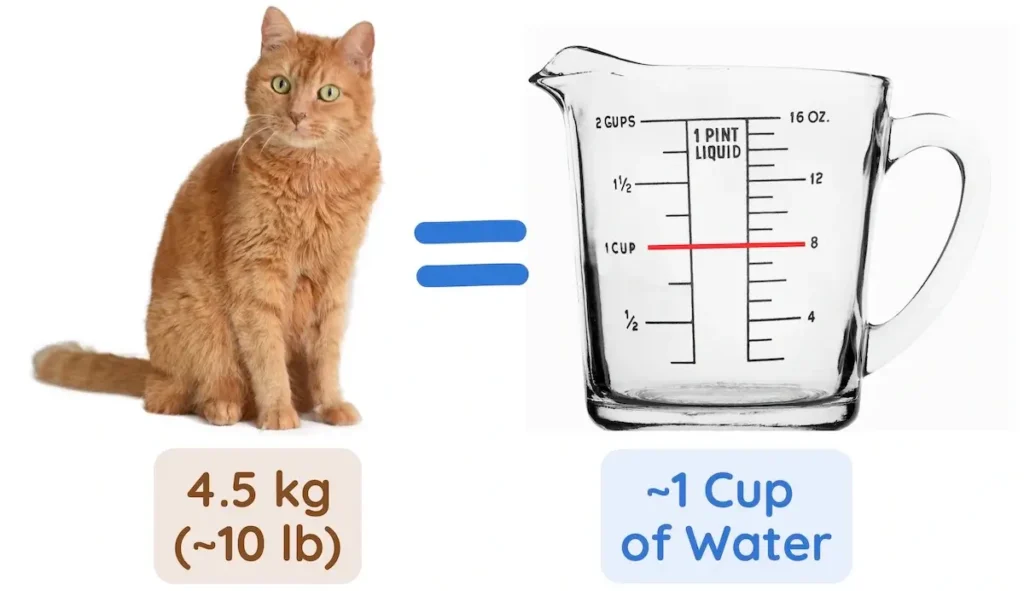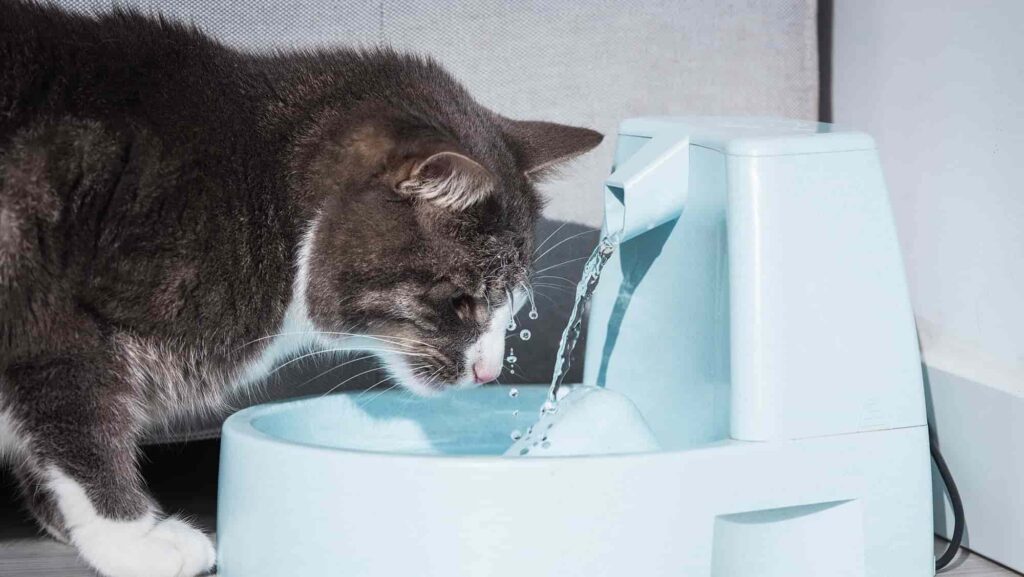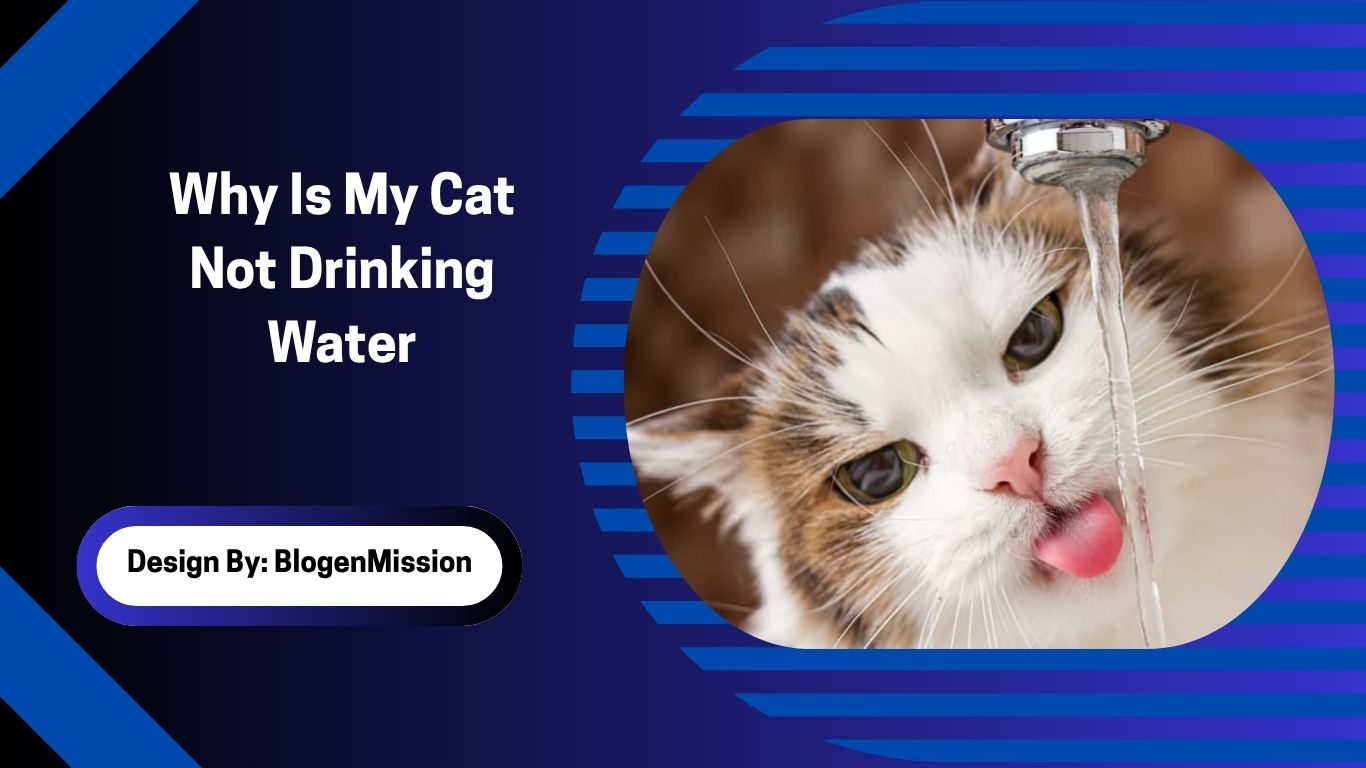Cats may stop drinking water due to illness, stress, bowl aversion, or preference for running water. Prompt hydration and veterinary care are essential to prevent dehydration and related health issues.
Cats are known for their mysterious behavior, but when your feline friend suddenly stops drinking water, it can be a serious concern. Why is my cat not drinking water? This is a common question among cat owners, especially when they notice cat drinking less water suddenly or avoiding the water bowl altogether.
Your cat’s health depends on staying hydrated. Without enough water, cats are at risk of developing kidney problems, urinary tract issues, and even organ failure. In this article, we’ll explore the possible causes, warning signs, and safe ways to increase cat hydration, so you can keep your kitty healthy and hydrated.
Is It Normal for Cats to Drink Very Little?
Cats naturally have a lower hunger drive than dogs. Wild cats typically get most of their water from prey, and domestic cats—especially those on wet food diets—often don’t feel the need to drink much.
However, while it’s somewhat normal for cats to drink less, sudden changes or complete avoidance of water can be signs of something more serious.
How Much Water Should a Cat Drink Per Day?

A healthy cat should consume around 3.5 to 4.5 ounces of water per 5 pounds of body weight daily. For example, an 8-pound cat should drink about 7–9 ounces a day.
Factors that affect water intake:
- Diet (wet food = more hydration, dry food = less)
- Age
- Activity level
- Health conditions
If your cat is drinking significantly less than this, it’s time to investigate.
Signs of Dehydration in Cats
Cats are masters at hiding discomfort, so it’s crucial to recognize early cat dehydration symptoms:
- Dry gums and mouth
- Lethargy or weakness
- Loss of skin elasticity (check by gently lifting the scruff)
- Constipation
- Sunken eyes
- Reduced urination
If you notice these signs of dehydration in cats, you should act quickly to hydrate your pet and consult your vet if needed.
Why Is My Cat Suddenly Not Drinking Water?
There are many possible reasons your cat might stop drinking water:
1. Illness Causing Low Water Intake
Underlying medical conditions like:
- Kidney disease
- Urinary tract infections (UTIs)
- Dental issues
- Diabetes
can all lead to reduced thirst or cat not drinking but eating normally.
In particular, kidney problems in cats are a common cause of dehydration in senior cats.
2. Behavioral Changes in Cats
Stress, new environments, or even a recent vet visit may cause your cat to behave differently—including avoiding the water bowl.
3. Water Bowl Aversion
Sometimes the problem is as simple as the bowl itself. If your cat not drinking from bowl, it could be due to:
- Dirty water
- Strong smell from the plastic bowl
- The bowl’s location (too noisy or crowded)
- The shape or size of the bowl
Cats are particular about their surroundings and may simply be uncomfortable with how or where their water is presented.
4. Cat Prefers Running Water
Many cats instinctively prefer moving water over still water. If your cat only drinks from the tap, it could mean they find running water fresher or more appealing.
Senior Cat Not Drinking Water?
As cats age, their thirst mechanism becomes weaker. A senior cat not drinking water might be dealing with arthritis, kidney disease, or simply a lack of interest. In older cats, even mild dehydration can become a serious issue quickly.
Wet Food vs Dry Food Hydration
Cats who eat dry kibble are more prone to dehydration than those on wet food diets, which can contain up to 80% moisture. If your cat eats only dry food and avoids drinking, they’re at higher risk for urinary and kidney issues.
Consider switching to:
- Wet or raw food
- Soaking dry kibble in water or broth
- Offering broths or tuna juice (without salt or seasoning)
How to Hydrate a Cat: 10 Practical Tips?
If your cat isn’t drinking enough, here’s how to safely increase their water intake:
- Switch to Wet Food: This is the easiest way to increase hydration through diet.
- Add Water or Broth to Food: A little low-sodium chicken broth or tuna water can make meals tastier and hydrating.
- Use a Water Fountain for Cats: Cats are often drawn to running water. A cat water fountain can mimic natural sources and encourage drinking.
- Try Different Bowls: Glass, stainless steel, or ceramic bowls are better than plastic, which can harbor odors.
- Offer Multiple Water Stations: Place water in different rooms. Some cats are picky and prefer drinking away from their food and litter box.
- Keep Water Fresh: Change water daily. Cats may avoid stale or dirty water.
- Add Ice Cubes or Toys: Floating ice cubes or ping-pong balls can make water more interactive.
- Flavor the Water: Add small amounts of cat-safe broth to make water more appealing.
- Keep Water Bowls Wide: Cats dislike having their whiskers touch the bowl sides (whisker fatigue).
- Monitor Cat Drinking Habits: Keep an eye on how much your cat drinks and acts around the water bowl.
Home Remedies for Dehydrated Cats

If your cat shows mild dehydration, try:
- Offering flavored electrolyte water (vet-approved)
- Giving canned pumpkin for added moisture
- Providing wet treats with high moisture content
But if symptoms persist or worsen, seek veterinary help immediately.
How Long Can Cats Go Without Water?
Healthy cats may survive 3–4 days without water, but serious health consequences can occur after just 24–48 hours of dehydration. Kittens and senior cats are especially vulnerable and need urgent attention if not drinking.
Should I Be Worried If My Cat Isn’t Drinking?
Yes — especially if your cat suddenly stops drinking water, is lethargic, or shows other signs of dehydration. It’s important to observe closely and consult a vet if hydration doesn’t improve within 24 hours.
FAQs:
1. What medical issues can cause a cat to stop drinking water?
Kidney disease, diabetes, urinary infections, or dental pain can reduce thirst. If your cat drinks less water suddenly, seek veterinary advice to rule out or treat underlying health conditions promptly.
2. Can diet affect my cat’s hydration levels?
Yes, cats on dry kibble are more prone to dehydration than those on wet food. Wet food provides significant moisture, reducing their need to drink extra water throughout the day.
3. Why does my cat only drink from the tap?
Cats often prefer moving water because it feels fresher and cleaner. This behavior may suggest they dislike their bowl or still water. A water fountain can encourage healthier drinking habits.
4. How can I tell if my cat is dehydrated?
Look for dry gums, sunken eyes, lethargy, and reduced skin elasticity. Gently pull their scruff—if it doesn’t quickly return to place, they may be dehydrated and need urgent care.
5. What can I do to help a senior cat drink more water?
Senior cats may have a weaker thirst drive. Offer wet food, flavor their water with broth, use shallow wide bowls, or try a cat water fountain to make drinking more appealing.
Conclusion:
Dehydration in cats can lead to serious health problems, so noticing when your cat isn’t drinking enough is crucial. Whether it’s due to illness, aging, behavioral changes, or picky preferences, it’s essential to act quickly. Offer fresh water in multiple places, try wet food, or use a cat fountain to increase hydration. Monitoring your cat’s habits and responding early helps prevent complications. When in doubt, always consult your veterinarian to ensure your furry friend stays healthy, happy, and hydrated.
Related Post:
- Do Hotels Allow Cats – Complete Guide for Traveling Cat Owners!
- Canned Cat Food For Diabetic Cats – Complete Guide!
- Low Carbohydrate Canned Cat Food – Healthy Choice for Your Feline!
